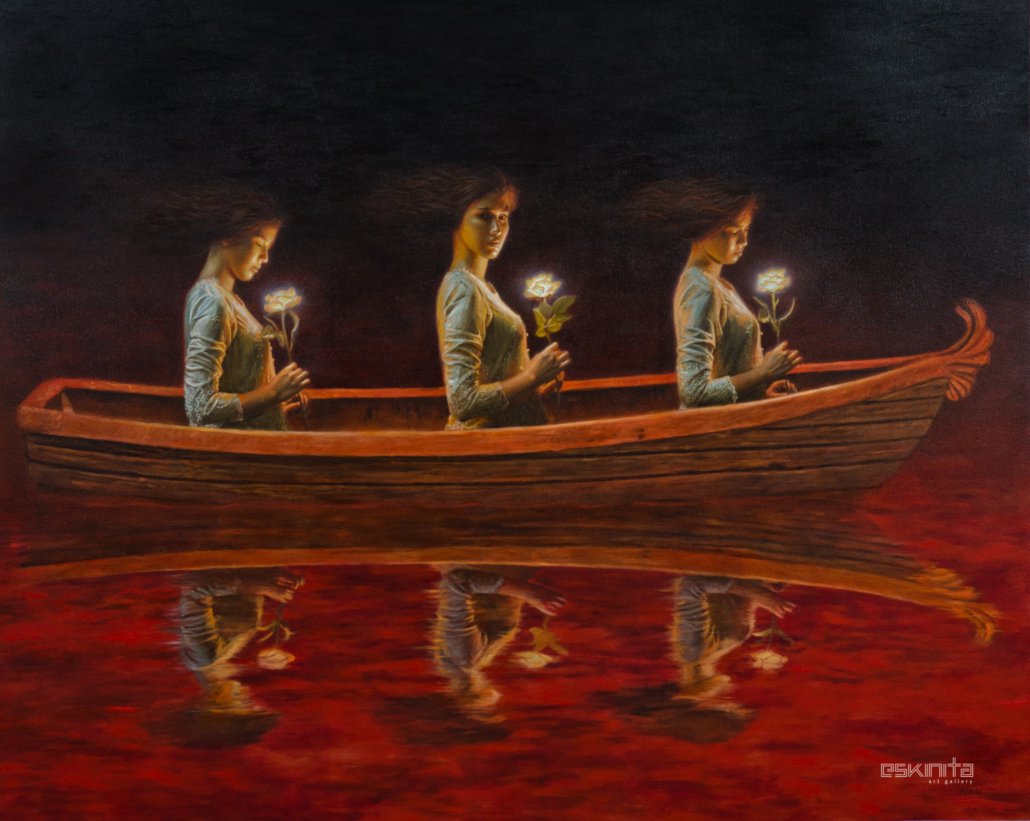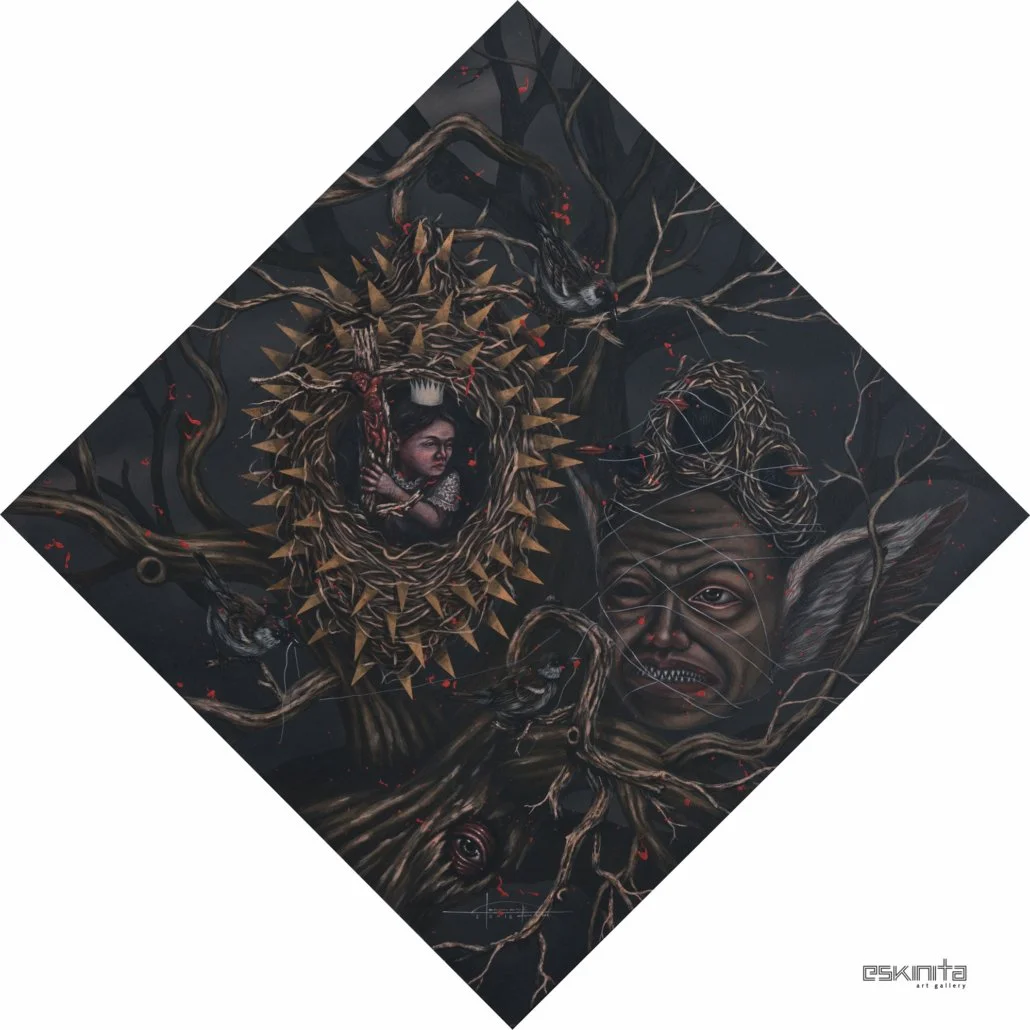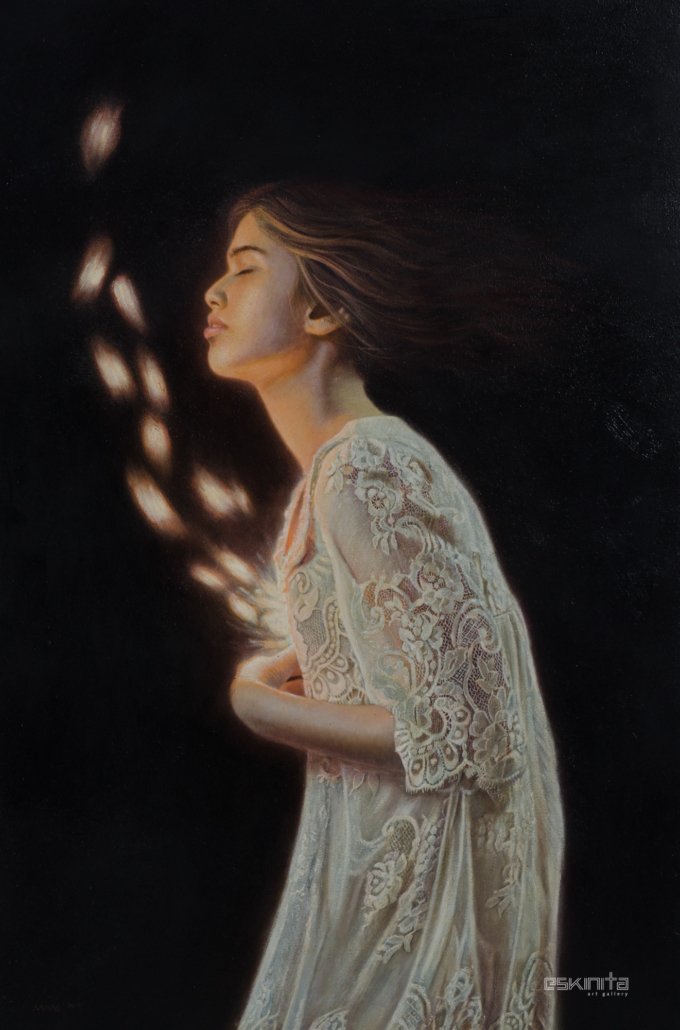
Dark / Light
Denmark Dela Cruz/ Mark Leo Maac
August 14 to 30, 2018
Poverty is a reaper that harvests what’s in every single one of us — it leaves us empty, and numbed that we may endure all the darkness of the present. Denmark clinches on this idea, and is asserted in the overall outlook of his works. The transparency of the grudgingly looking eyes, the tumultuous texture of barbed wires, and the distinctive portrayal of mother and child does not simply explain but successfully promulgate that the absence of security is responsible for our social unrest.





Three of his works are intriguingly built in shapes of diamond, mocking the shape of a square by postulating the same sense of balance. It also derides a dubious maxim procured from a song entitled Tatsulok, that some people have come to live by — a maxim implying that as long as those who are in power remains on top of the triangle, the harsh reality of the world will remain. And even probed further, perhaps there isn’t really a triangle to be inverted but only a world where inequality has always been the status quo.
In one of these diamonds, those who are in power wear a requisite nest over themselves, and etched onto their heads, marked by their entitlement for a sense of security. They use this to shield themselves from vulgarity even though they may possess and be surrounded by it. In the next diamond, we see an abundant depiction of birds in their nests. One would think that there is much purity in this fertility of living things, but these creatures have a clear purpose and sole function of their own perpetuation, and self-reproduction as a sterile elite. In the last diamond, there is a secured kingdom amidst the loud and piercing thorns that surround it with police defenders as protectors only through the extent of a glance.
Have our customs become so destitute that we have rejected the possibility to circumvent all these societal barriers? The possibility for change is arduously reinforced in the main triptych of Denmark. Liberation does not simply promote deliverance — a former drug addict may leave a jailhouse, but never his condemnation. The two soldiers surrounding the damned implores that patient obstinacy flush out the possibility of change in other people. They protect themselves from societal pollution and contamination by having civil obedience from corrupted superiors, and thus repeat the cycle of poverty, starvation, stupidity, and cruelty.



Light without effulgence is equally elusive. The emotions that sting most are those that are unintelligible, those that intensifies the longing for things that are absurd precisely because they are impossible. All this wistfulness for what never was, and desire for what could have been enforce that the absence of security is also responsible for personal dissatisfaction of one’s existence within the world. Absorbed in reveries and passion, Mark puts forward a painful landscape of a realization that comes from not knowing itself.
Oftentimes, when we are unaware of our personal goals, and unable to explain why we seek them, we will eventually see ourselves leading to such a vain existence. That is when you aim for the stars and suddenly realize you are actually trapped. The recurring red elements in Mark’s works reassures this intensity of self-loathing for one’s uncertainty.
Using the dazzling illusion of the roses picked directly from a period that created an emotional interstice in him, Mark showcases a personal fragmentation of his experiences, and memories. All those things that pass before us botched for eternity, all the words we should have said, gestures we should have made that are all buried forever in the void create a level of torment. This absurd repetition creates an existential struggle, that even in its distressing nudity, we perpetually gaze at it.
In his main work, Mark exhibits a picture for an unknown voyage while portraying how the light falls softly on the vast sea. The light strikes the surface of the water, and shows a series of one’s reflections along with it. In Mark’s case, his colleagues are the ones who gave him light. The artist’s pursuit for lucidity demanded by reason compels us to accept the meaningless confrontation between man and the world.
Being entrapped teaches one the true essence of hope. In both cases, hope is detected through close scrutiny of their strokes and their ability to tame shadow and light respectively. Even though Denmark’s works are situated mostly in the shadows, the repeated use of trees infuses much humanity and nostalgia for his works and a collective purpose. And as exhibited by Mark, there is also so much power in just feeling one’s own insignificance when we are surrounded by nature. That even in the light, one can experience entrapment for what he aims for. This gripping fusion of two of Eskinita’s Tuklas artists Denmark Dela Cruz, and Mark Maac is presented in the back to back exhibit | Dark | Light |.
-Karen Tesalona

